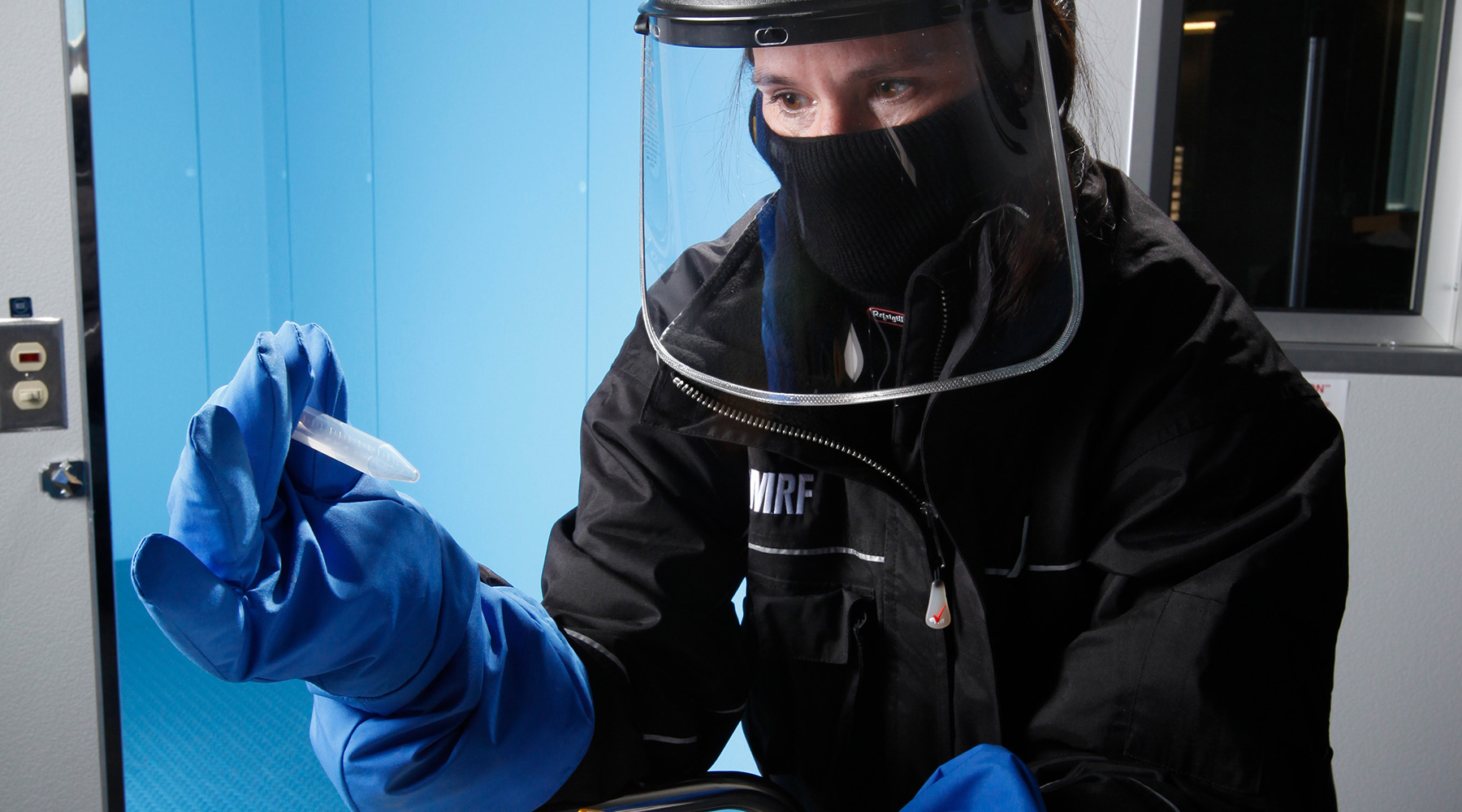Welcome to the OMRF’s Biorepository, Oklahoma’s very own north pole
Parkas, heavy-duty gloves and boots. It’s not the standard uniform for scientists. But for the researchers who staff OMRF’s ultra-cold biorepository, every day is much like a trip to the Arctic Circle.
OMRF built the facility in 2011 to house more than 1 million biological samples gathered from research subjects over the past three decades. With temperatures as low as -80 degrees Celsius (that’s -112 degrees Fahrenheit), the biorepository—one of the largest of its kind in the U.S.—guarantees that scientists will have access to the samples for generations to come.
“This deep freeze is vital to research at OMRF,” says Dr. Joel Guthridge, who serves as director of the core facility where the biorepository is housed. “Whenever a scientist does large-scale DNA testing to find genes that relate to a disease like lupus or heart disease, they need samples from donors. In order to keep those samples in the best possible condition for testing, we divide them up into small quantities and keep them very, very cold.”
Because the integrity of the samples is so important, the biorepository has a three-layer backup, including an emergency system that uses liquid nitrogen in case of a total loss of electricity.
Workers cannot stay in the freezer for more than 10 minutes at a time, lest they develop frostbite, hypothermia or other health issues from the extreme cold. To ensure employee safety, Guthridge says, they rely on the buddy system. “Two people go into the freezer while a third waits outside. If something happens, they can press an alarm to alert us they need help. Timers also ensure no one stays inside too long.”
At full capacity, there’s space for another 4 million samples. OMRF is continuing to gather those from healthy controls and patient volunteers who come to OMRF clinics while also seeking additional samples from other clinics and pharmaceutical partners. “Our aim,” says Guthridge, “is to build a resource that researchers around the world can use to answer some of our most challenging medical questions.”



